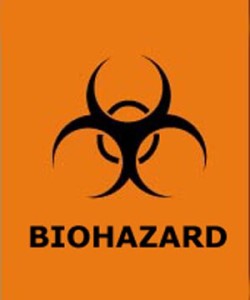Laboratory Safety: General, Biological, & Chemical
Laboratory safety encompasses many facets, including chemical safety, biological safety, safety involving radioactive materials, and the safe use of equipment, lasers, and machinery. Because laboratories vary markedly in the kinds of hazards present, laboratory safety must be tailored to the nature of the research or teaching activities.
To assist with laboratory safety, colleges have instituted safety committees with representatives from each department with laboratories and the supporting departments (e.g., facilities). These committees meet at least once per semester to discuss biological safety, chemical safety, environmental topics, incidents, and/or management options.
Biological Safety (Biosafety)
Research laboratories and classes conduct various activities, which may have the potential to expose faculty, adjuncts, staff, students and visitors to biological materials. These activities may include but are not limited to the manipulation of cells, tissues, and microorganisms.

Biological materials are natural biocompatible materials that comprise a whole or a part of a living structure or biomedical device that performs, augments, or replaces a natural function. Biological materials are most often engineered for medical, biotechnology and pharmaceutical applications. Many materials are considered biocompatible or biological materials including human derived, natural materials, laboratory support products, and application specific products.
To eliminate or reduce this potential exposure, each institutions working with biological materials has developed a Biosafety Manual to outline the practices and procedures to provide a safe working and teaching environment for faculty, adjuncts, staff, and students. In addition, institutions working with rDNA and/or conducting research under the National Institutes of Health (NIH) have instituted an Institutional Biosafety Committee (IBC) to oversee the Biosafety Program.
If you are posing to work with biological materials, please contact your Biosafety Officer to determine whether or not your project is required to go to the IBC for review prior to commencing the work and the biosafety practices and procedures, which apply to your work.
Chemical Safety
Chemical safety is achieved by undertaking all activities involving chemicals in such a way as to ensure the safety of human health and the environment. It covers all chemicals, natural and manufactured, and the full range of exposure situations from the natural presence of chemicals in the environment to their extraction or synthesis, use, transport, and disposal.
Chemical safety has many scientific and technical components. Among these are toxicology, ecotoxicology and the process of chemical risk assessment which requires a detailed knowledge of exposure and of biological effects. Here is a video demonstrating the hazards associated with chemical safety in a laboratory: Experimenting With Danger




 Hot Topics
Hot Topics